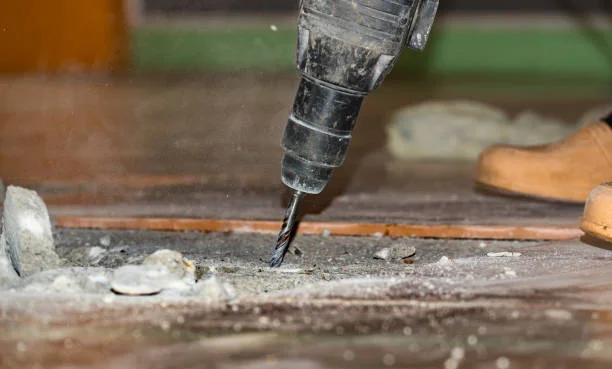Choosing the appropriate flooring material is frequently the main priority when remodeling or creating a new area. Builders and homeowners alike ponder for hours over the cost, durability, and beauty of several flooring solutions. What many people miss, though, is the subfloor—the base upon which these exquisite floors will be installed. We will explore the significance of appropriate subfloor preparation for Floor installation in this extensive tutorial, as well as the reasons it should be your top priority.
Understanding the Subfloor: The Unseen Support
Let’s begin by defining a subfloor and discussing its function in the flooring industry before delving into the significance of subfloor preparation.
In essence, the subfloor is your flooring’s unseen support system. It is the layer that lies under the floor material of your choice, be it tile, laminate, hardwood, carpet, or any other material. The main function of the subfloor is to give the finished floor a level, sturdy, and solid foundation. It serves as the structural support for all loads placed on the floor, including furniture, foot movement, and other loads. Depending on how the room is built, plywood, oriented strand board (OSB), or concrete are common subfloor materials.
The Importance of Proper Subfloor Preparation
Ensures a Smooth and Level Surface: One of the primary objectives of subfloor preparation is to create a perfectly level and smooth surface. Any irregularities in the subfloor can result in an uneven final floor, leading to noticeable bumps, gaps, or squeaks. Proper subfloor preparation eliminates these issues, ensuring a comfortable and visually appealing floor.
Prevents Moisture Issues:
Moisture can be a significant threat to various flooring materials, leading to warping, buckling, and the growth of mold and mildew. Proper subfloor preparation includes moisture barriers, ensuring the longevity of your new floor and preventing costly damage in the future.
Maximizes Flooring Durability:
The subfloor acts as the foundation for your flooring. A poorly prepared subfloor can cause the Flooring material to wear out faster, leading to premature replacement. Proper subfloor preparation maximizes the durability and lifespan of your new floor, ultimately saving you time and money in the long run.
Enhances Energy Efficiency:
Subfloor preparation can include insulation materials that improve the energy efficiency of your home. A well-insulated subfloor can help maintain a comfortable indoor temperature and reduce heating and cooling costs.
Reduces Noise:
A well-built subfloor can lessen noise transfer through the floor, making a home that is calmer and quieter. This is particularly crucial for apartments or houses with multiple stories.
Prevents Structural Issues: Proper subfloor preparation also addresses structural concerns. An unstable or damaged subfloor can compromise the integrity of your home’s structure, leading to sagging or uneven floors.
Key Steps in Subfloor Preparation
Now that we have established the importance of proper subfloor preparation, let’s take a closer look at the key steps involved:
Subfloor Inspection:
Before you begin any flooring project, conduct a thorough inspection of the existing subfloor. Look for signs of damage, water intrusion, or structural issues. Any problems should be addressed before proceeding.
Subfloor Cleaning:
Remove any debris, dust, or old adhesives from the subfloor. It should be clean and free from obstructions that could affect the adhesion of the new flooring material.
Subfloor Leveling:
Ensure that the subfloor is perfectly level. Any deviations or unevenness should be corrected using leveling compounds or underlayment materials. A level subfloor is essential for a smooth and uniform finished floor.
Moisture Barrier Installation
Install a moisture barrier or vapor barrier if necessary. This is particularly important in areas prone to moisture, such as basements or bathrooms. The moisture barrier prevents water from seeping into the subfloor and damaging the new flooring material.
Subfloor Reinforcement:
In cases where the existing subfloor is weak or damaged, it may require reinforcement. Additional layers of plywood or other structural materials can be added to provide the necessary support and stability.
Subfloor Insulation:
Consider adding insulation materials to enhance energy efficiency and reduce noise transmission. This step can significantly improve the comfort of your home and lower energy bills.
Subfloor Fastening:
Ensure that the subfloor is securely fastened to the floor joists. Loose or squeaky subflooring should be addressed by adding screws or nails to secure it in place.
Moisture Testing:
Perform moisture testing to ensure that the subfloor is dry and suitable for the installation of the new flooring material. High moisture levels can lead to various issues, so it’s important to address this before installation.
Subfloor Compatibility:
Verify that the subfloor is compatible with the adhesive or installation method required for the chosen flooring material. Different flooring types may have specific subfloor requirements.
Professional Inspection:
Consider having a professional inspector evaluate the subfloor’s condition and the adequacy of the preparation. Their expertise can help identify any hidden issues and ensure that the subfloor is ready for the new flooring.
Conclusion
Proper subfloor preparation is an often-underestimated yet vital aspect of floor installation. It is essential to guaranteeing a level, even, and structurally strong base for your new flooring. Proper subfloor preparation has many advantages, such as increased durability, better aesthetics, less noise, energy efficiency, moisture prevention, and structural stability.
Consider carefully evaluating the subfloor’s state and taking the required precautions before starting your next floor installation project. By doing this, you can guarantee a long-lasting, cozy, and aesthetically pleasing living area that will survive the test of time in addition to laying a strong foundation for your new flooring. The unsung hero of a good floor installation is proper subfloor preparation, which is an investment in the longevity and beauty of your flooring.

